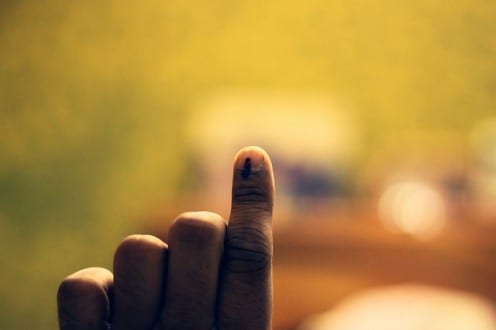(Brain) Drain vs. Gain
By Shriram Venkatraman, on 16 November 2013

Photo by Sinistra Ecologia Libertà (Creative Commons)
Recently, when I was interviewing a retired school Principal, she casually mentioned how disheartened she was about the Brain Drain that was happening in India and Brain Gain that was happening in developed nations. At first it just seemed like a casual mention, but when she kept returning back to this topic over and over again, it somehow seemed to strike a chord even with my Research Assistant. To examine this topic further, I thought it would be helpful to first understand what each of these terms mean. ‘Brain drain’ is the flight of qualified and intelligent individuals from a particular geographic region or field and ‘brain gain’ is the influx of qualified and intelligent individuals into a geographic area or field of work. Brain drain, by definition, is a depletion of vital human resources that would have helped to develop that area (geographic area or field of work). On the other hand, brain gain is an aggregation of talent that can potentially transform the area if the additional talent can be nurtured and channeled in a proper manner.
Geographically, brain-drain is an oft repeated complaint in many countries of the developing world where infrastructure and economic return may not match what is offered in more developed countries. This is evident in India where there is a constant outflow of talented and well qualified individuals to first world countries in North America, Western Europe, Australia and some Asian countries as well. Such individuals leave India in search of more economically viable jobs, better infrastructure, respect for their talent and a perceived higher quality of living. This is a visible phenomenon and has been talked about time and again in the media. A more hidden and subtle form of brain drain in India is that of the outflow of qualified individuals from certain fields/professions to others. Let’s take for example the IT and ITES industries. Companies from these industries recruit talent in droves from colleges (especially, engineering/management for IT and Arts and Science colleges for ITES) and are lauded as economic boons.
This caught my attention through a series of interviews with a few undergraduate students studying in Engineering as well as Arts and Science colleges in my field site. What was evident was their aspiration to somehow get into the IT field. IT is such a drawing force that these students really haven’t explored their own field of study as much as they have explored the IT industry. Through any means possible they want to be associated with the IT industry. From Chemical Engineers to Tamil scholars, students tend to look at IT with a sense of awe and respect, though they often say that they are aware of the pitfalls in the industry. They tend to view IT careers as the panacea to all their problems (though it seems like all of their problems point to personal finances), through which they say they would attain status both in their own family as well as society at large. Their aspirations reminded me of Nicholas Nisbett’s book, Growing Up in the Knowledge Society. Though he deals with Bangalore, the case is similar with most of the South Indian cities where the IT economy rules. Of course, the physical distance that someone is from an IT industry is also a factor and given that my field site is so close to a Special Economic Zone that tends to favour the IT industry, such aspirations aren’t really a rarity. However, what is often overlooked is that this talent inflow into IT/ITES is at the cost of losing talent in other areas of Engineering, Sciences and Humanities. In other words, the IT industry’s brain gain is the result of a brain drain from other disciplines and this leads to a skewed and potentially unsustainable distribution of talent. Thus, India faces a simultaneous brain drain and brain gain which together are a more complicated issue than if each is seen separately.
 Close
Close






